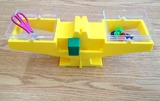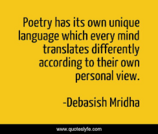
This resource is a remix from Illustrative Mathematics (https://goopenva.org/courses/3-md-how-heavy). This resource encourages student collaboration and allows students to have a mathematical dialogue as express their understanding of units of measure. Teachers can use objects found around the house to demonstrate mathematics in the real world. I like how this resource adds flexibility in instruction, as it allows teachers to creatively add diverse manipulatives or real-life items on the balance scale. This activity scaffolds the learning process allowing students an opportunity to experience active hands-on learning to strengthen their understanding of mathematical concepts, which provides a diverse learning experience. This resource is a valuable part of building background when introducing units of measure or equations in the early elementary years of mathematics education as it provides students a concrete example of building an equation with concrete objects. Suggested Modification - A student recording sheet with illustrations has been added to the resource to allow all different types of learner to learn from a concrete idea to strengthen conceptual learning about building an equation.
- Subject:
- Measurement and Geometry
- Patterns, Functions, and Algebra
- Material Type:
- Activity/Lab
- Lesson Plan
- Author:
- Sandy Chalke
- Date Added:
- 05/29/2020
